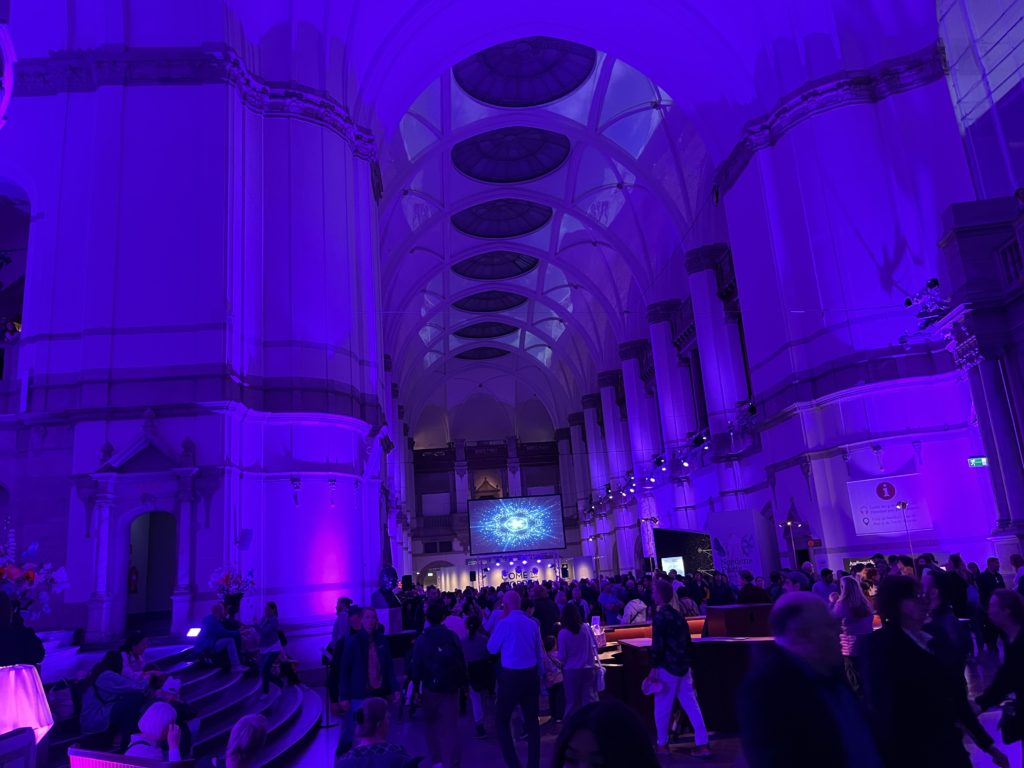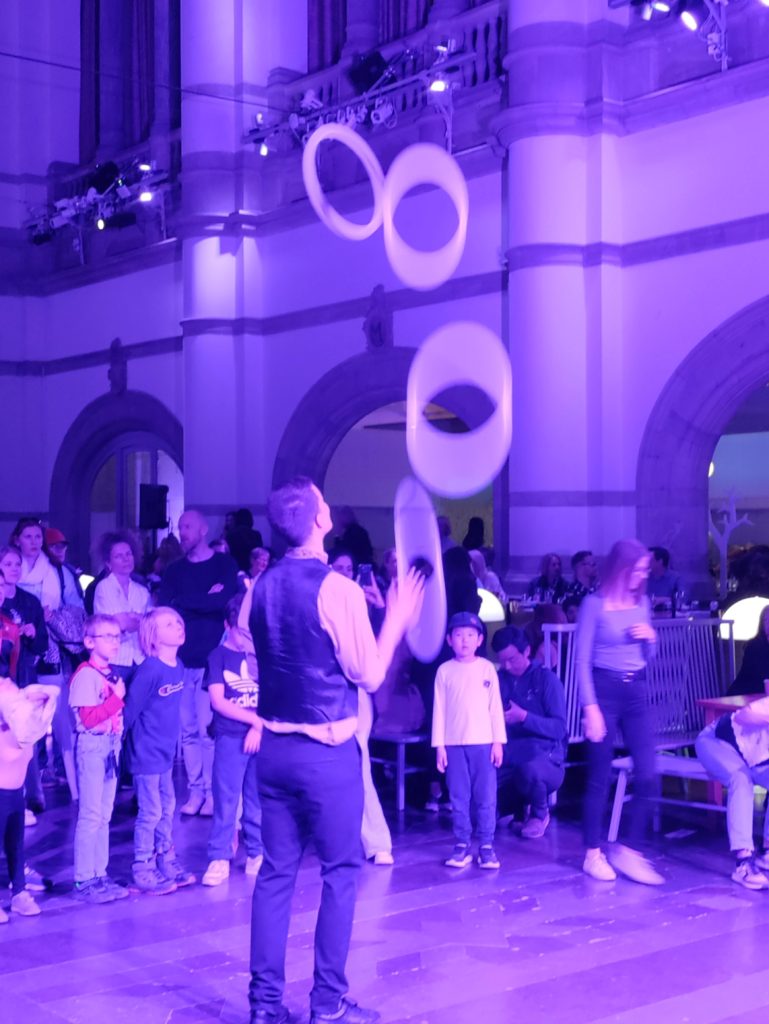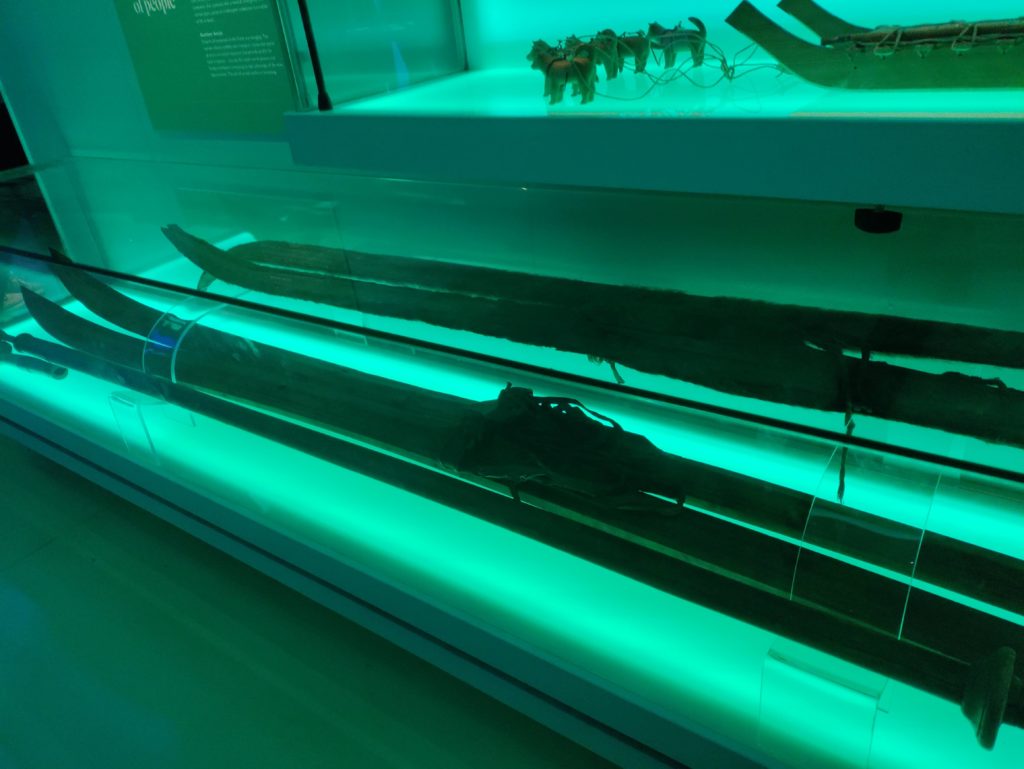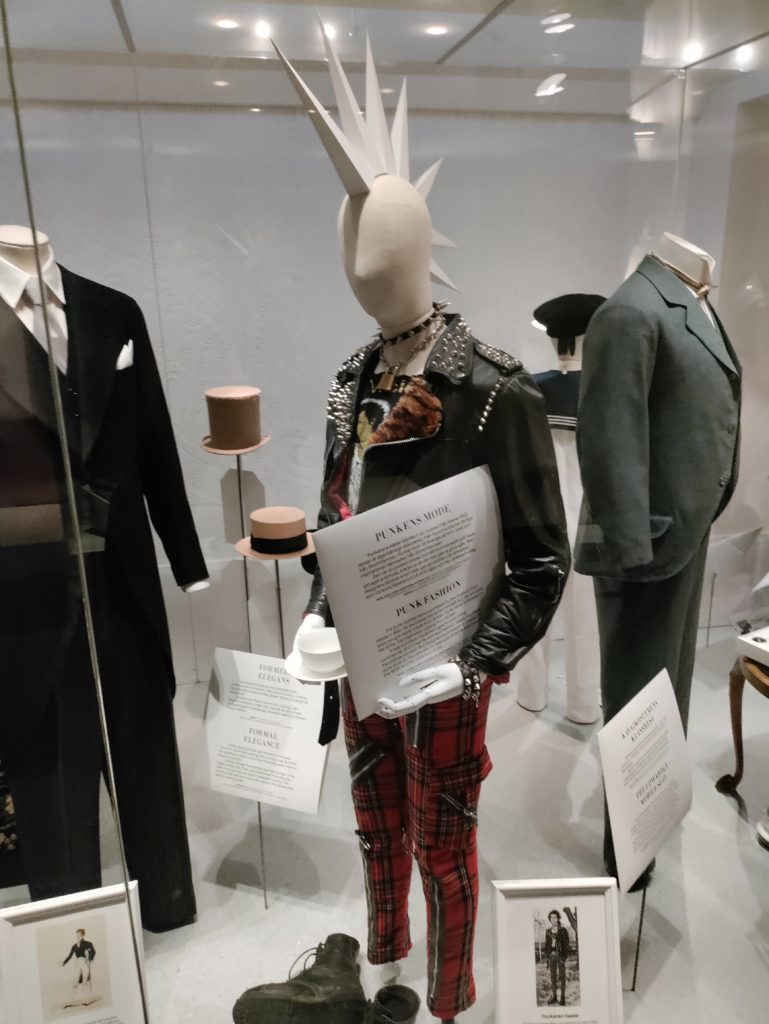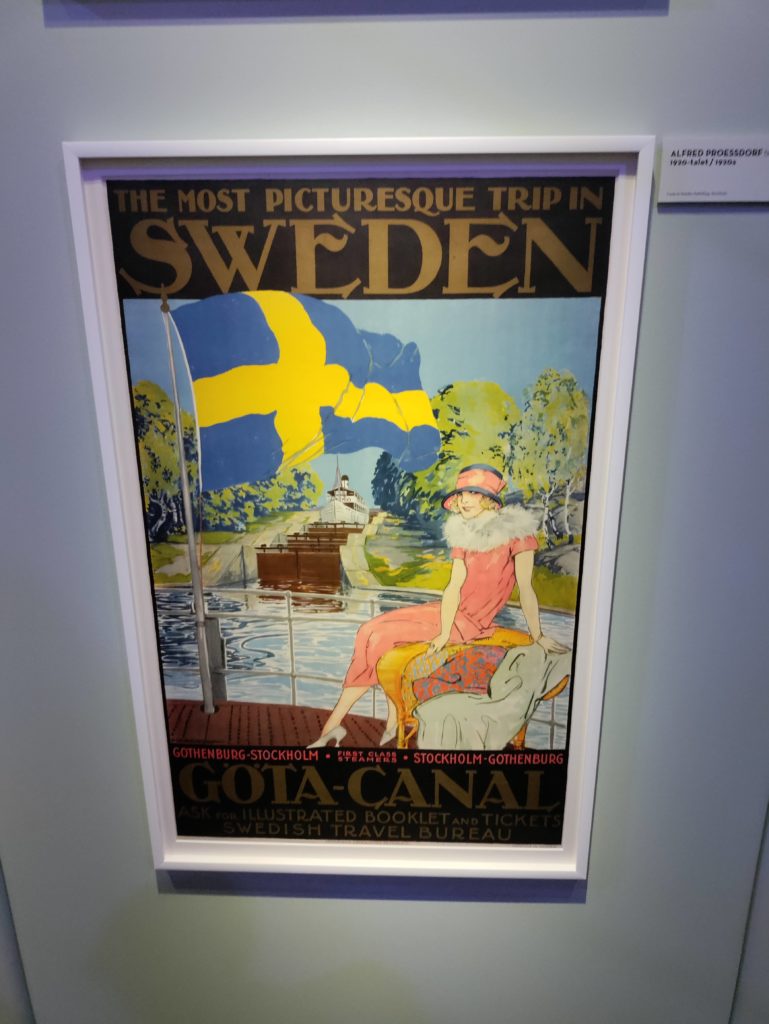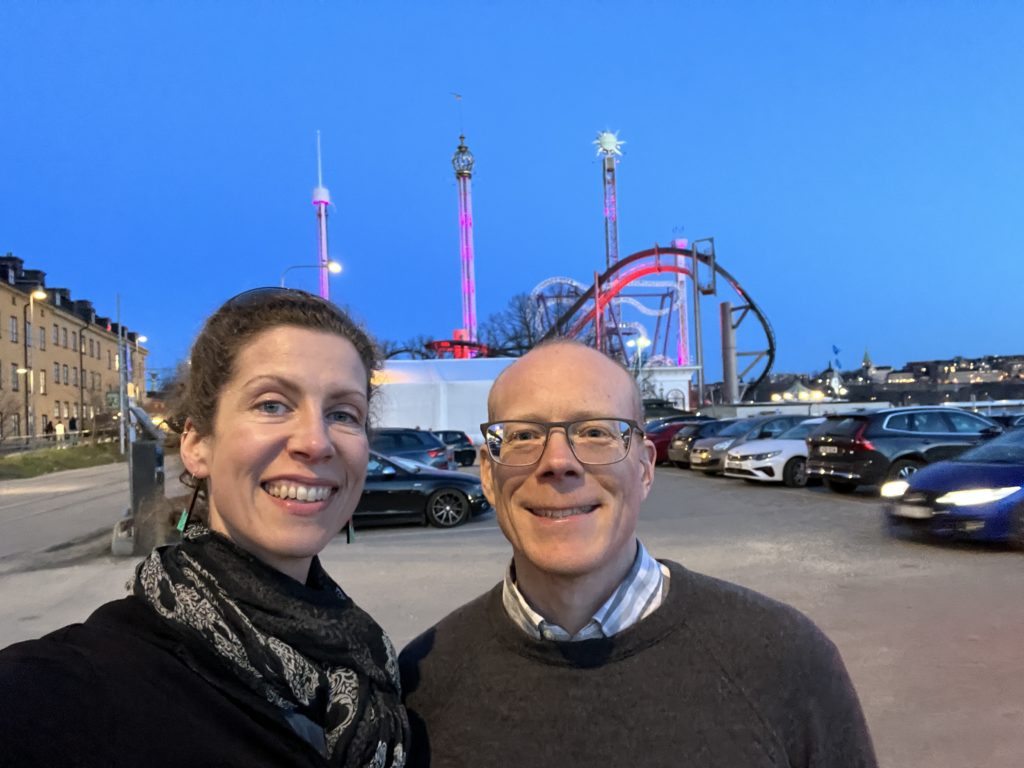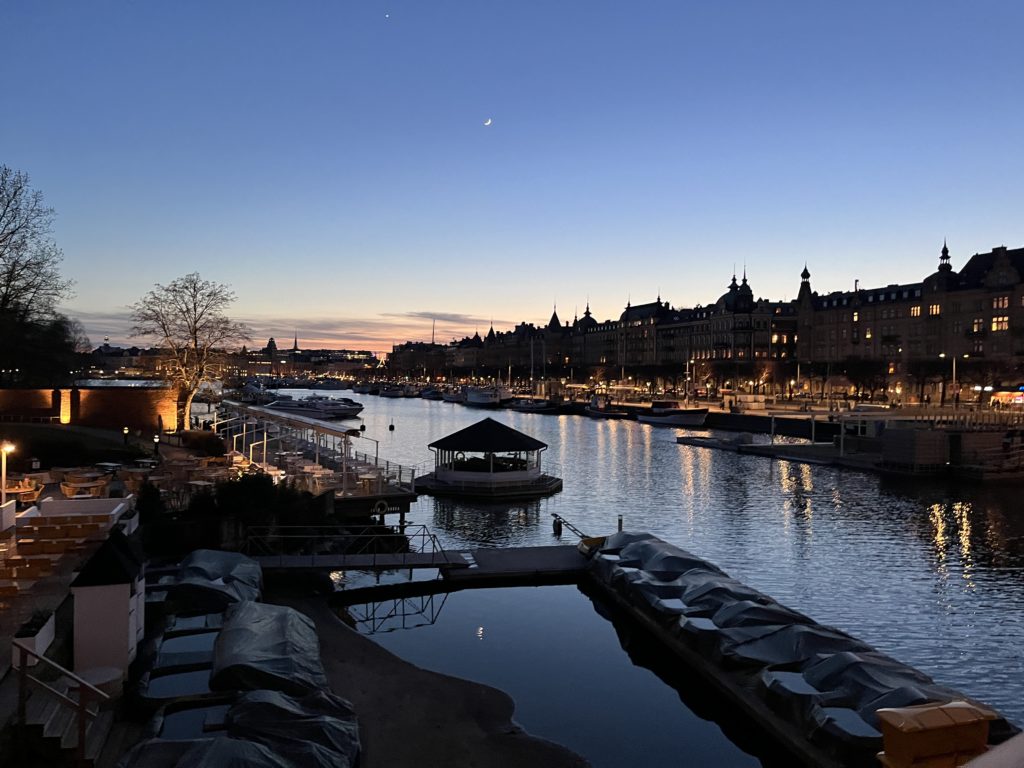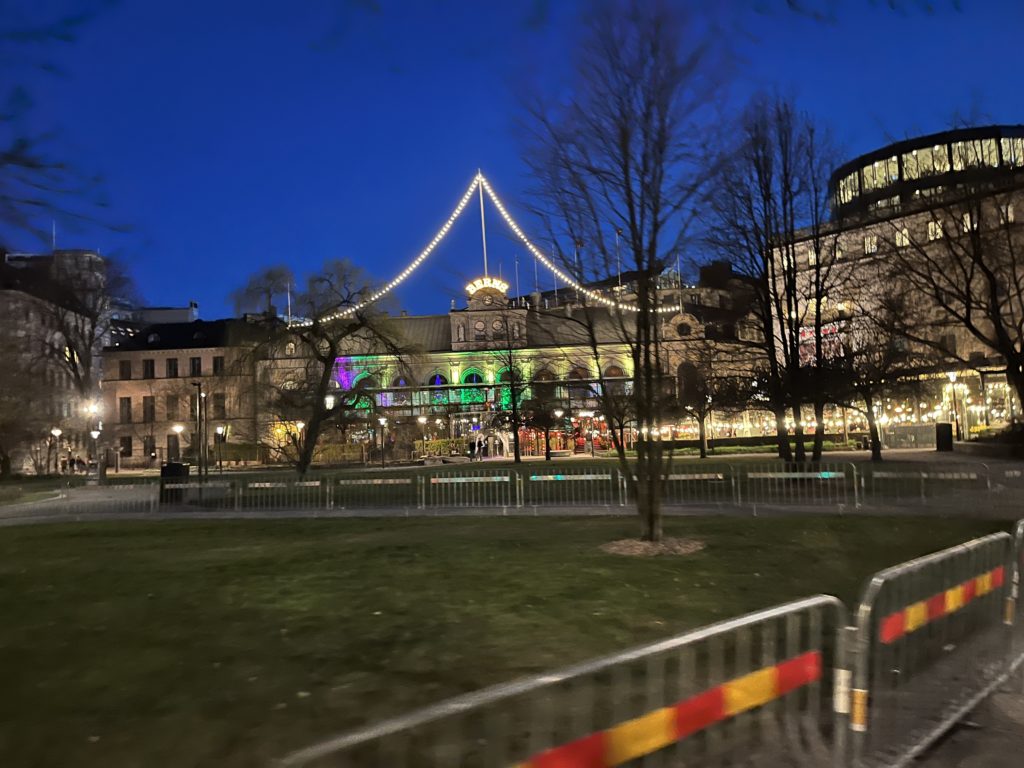
The last Saturday in April is KulturNatt (Culture Night) in Stockholm. It reminds me a bit of Lumo or Nuit Blanche in Saskatoon, but with a city-wide scale. This is the first one we attended since coming to Stockholm, since they were cancelled during the pandemic. Although there were some more local events, we decided to take the train into the city to Djurgården where there is a very high density of museums and park space. We went to Nordiska Muset, which we hadn’t yet visited since moving. Their main hall had circus and music performances, and was packed with people, including lots of families. There was also a big exhibit about the arctic, including the historical adaptations of the people and animals that live there and the impact of climate change on the region. This was a great exhibit to see on Earth day, and the looming threat(s) of the anthropocene era was woven into most parts of the exhibit.
There aren’t too many pictures since it was crowded, and seemed a bit anti-social to be viewing through a screen when there were lots of people to navigate around, but there are a few below to give you the idea. One of my favourite parts was about Indigenous hunting trips in Greenland, and the transport and navigation methods they developed for such a challenging environment. There was some photovoice videos collected by Inuit hunters, and some really great dogsleds and kayaks and skin boats. There were some fantastic exhibits of arctic clothing, from Sami pewter-embroidery to Inuit Sealskin pants to Icelandic wooly sweaters Siberian fur hoods. One of the coolest artifacts was a hand-carved wooden map of the coastline. As someone who has built mental maps of places by paddling around the coastline, these made a lot of sense to me. They float, they are waterproof, and they make it easy to describe to someone else where you are coming from, where you are going, or how they can get to their destination. I found a cool article on this if you want to read more about them. The article and the maps themselves reminded me of Keith Brasso’s Wisdom sits in places, which describes how the land is a mnemonic for transferring knowledge in Apache culture.
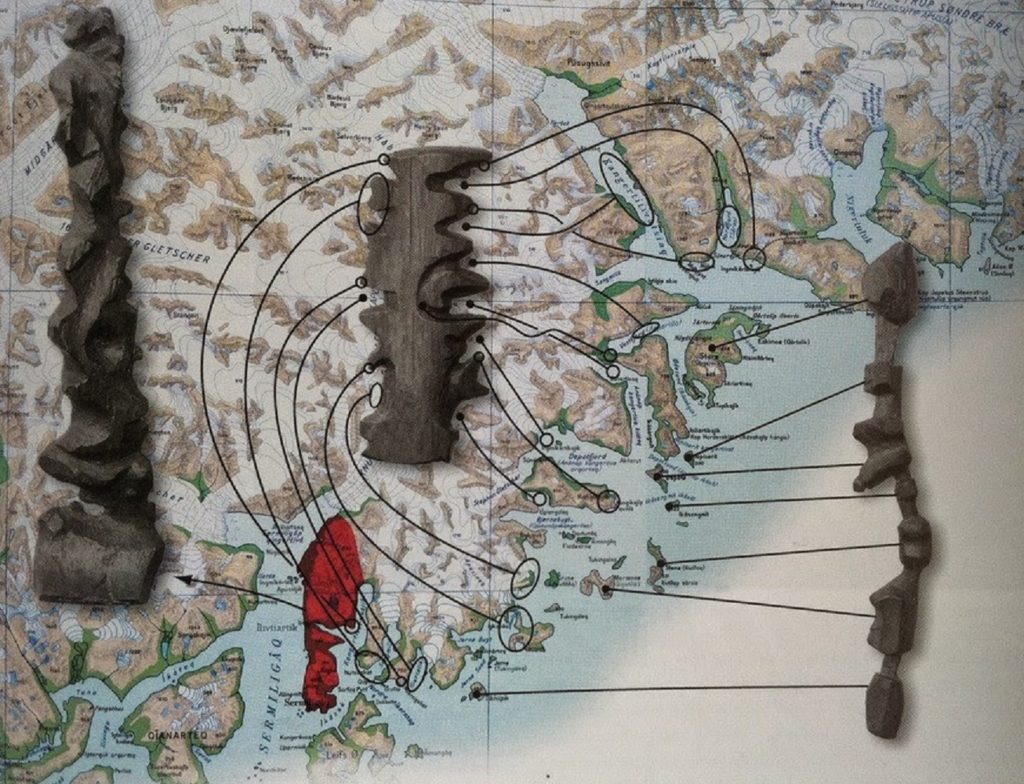
Here are the few photos we took. We will probably go again in the future, but will aim for the less crowded exhibits, and maybe in some of the less central locations. We will definitely head back to the Djurgården museums (and gladly pay the fees for a less crowded experience).

